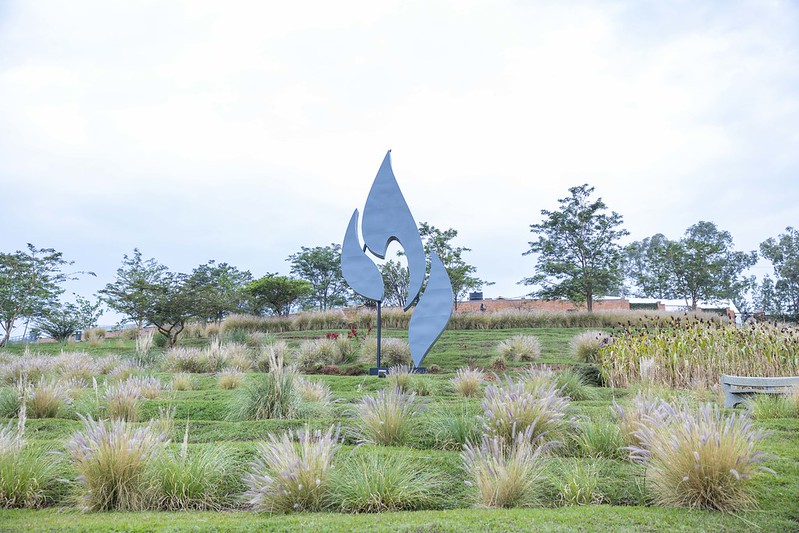
The garden of Memory in Nyanza-Kicukiro-commemoration of the 1994 Genocide against Tutsi started today
Rwanda has today started Kwibuka 29, the commemoration of the 1994 Genocide against Tutsi, a period that pays tribute to more than one million lives of innocent tutsi who were killed in one hundred days between April 7 and July 4, 1994.
Under the theme “Remember-Unite-Renew”, the commemoration includes a national commemoration week, which starts on April 7 with laying wreath at the mass graves of the Kigali Genocide memorial located in Gisozi-capital Kigali where more than 250,000 victims lay to rest.
At this memorial, the head of state who presides over the event where he is joined by diplomats, Rwandan officials, friends of Rwanda and the general public also lights the flame of hope which remains lit for 100 days.
The week during which all flags fly at half-mast concludes on April 13 with paying tribute to politicians that were killed during the Genocide. The official event takes place at Rebero Genocide memorial where officials and families lay wreath on the graves of the politicians who were killed for opposing the wrongdoings of the genocidal regimes.
Beyond the commemoration week, commemoration events continue in Rwanda and abroad until July 3 in several institutions including ministries, public and private institutions, international organisations, schools, companies, hospitals among others which, in most cases, lost staff during the Genocide.
Other commemorate at family level, district and/or sector levels where they remember the Tutsi that were killed in a particular place.
Testimonies of Genocide survivors, conversations that remind the history of the Genocide and the role that was played by different people during the Genocide together with a call to “never again the genocide” are among the key activities during Kwibuka.
This is on top of laying wreaths at the mass graves and burying in dignity the bodies of Genocide victims who are still being exhumed in different areas where they were dumped by killers who concealed the information that can leak in a way or another, anytime.
Prepared and tried by regimes of hatred in a project that took shape in the 1960s and onward, the Genocide was implemented by extremist hutus, the government military and security forces, influential officials, together with impuzamugambi and interahamwe militia who were the youth wings of extremist political parties.
Thousands of court cases that were concluded indicate that participating were people of all ages and all walks of life, including church ministers.
Stopping the Genocide on July 4,1994, the Rwanda Patriotic Front(RPF) Inkotanyi put in place a government of national unity which embarked on uniting Rwandans by trying scores of Genocide cases, encouraging seeking pardon on one hand and forgiveness on the other, and rebuilding the economy from ash.
The government is registering success on all fronts.


